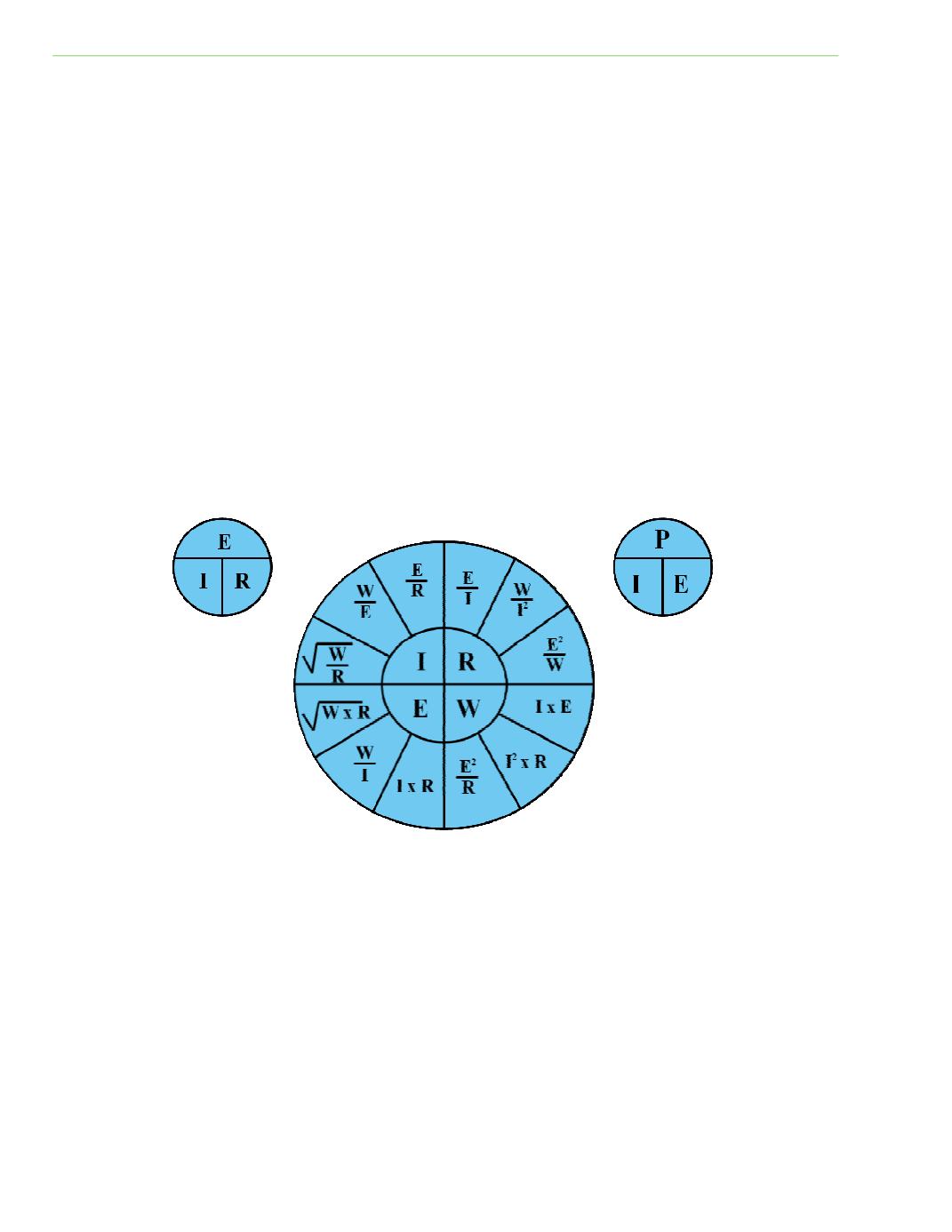

Page 10
Chapter 1: What Is Electricity?
Electrical Theory & Applications for HVACR
WATTAGE
James WaƩ (1763‐1819) discovered the method we use for measuring electrical power. Electrical
power is the rate at which electricity is used to perform useful work. This work is measured in units
called waƩs. In an actual electrical circuit converƟng electrical energy to useful work is not 100%
efficient. Some of the power produces heat or another byproduct which must be accounted for and is
calculated as reduced Power Factor.
Simply put WaƩs are calculated by mulƟplying amperage x voltage:
P
or
W = I x E
(746 waƩs = 1 horsepower)
A waƩmeter is normally located at the power entry to a building and measures the number of
kilowaƩs (1000 waƩs = 1 kilowaƩ) consumed. When calculaƟng the actual energy use the formula
WaƩs = Current x voltage x power factor
is used.
Figure 1‐10 is a wheel showing the formulas for calculaƟng volts, amperes, resistance, and power. It
is a combinaƟon of the Ohm’s Law circle and the Power Law circle. If any two factors are known, the
others can be calculated.
I = intensity (amperes)
R = resistance (ohms)
E = electromoƟve force (voltage)
W = waƩs (power)
P = power (waƩs)
Fig. 1‐10










